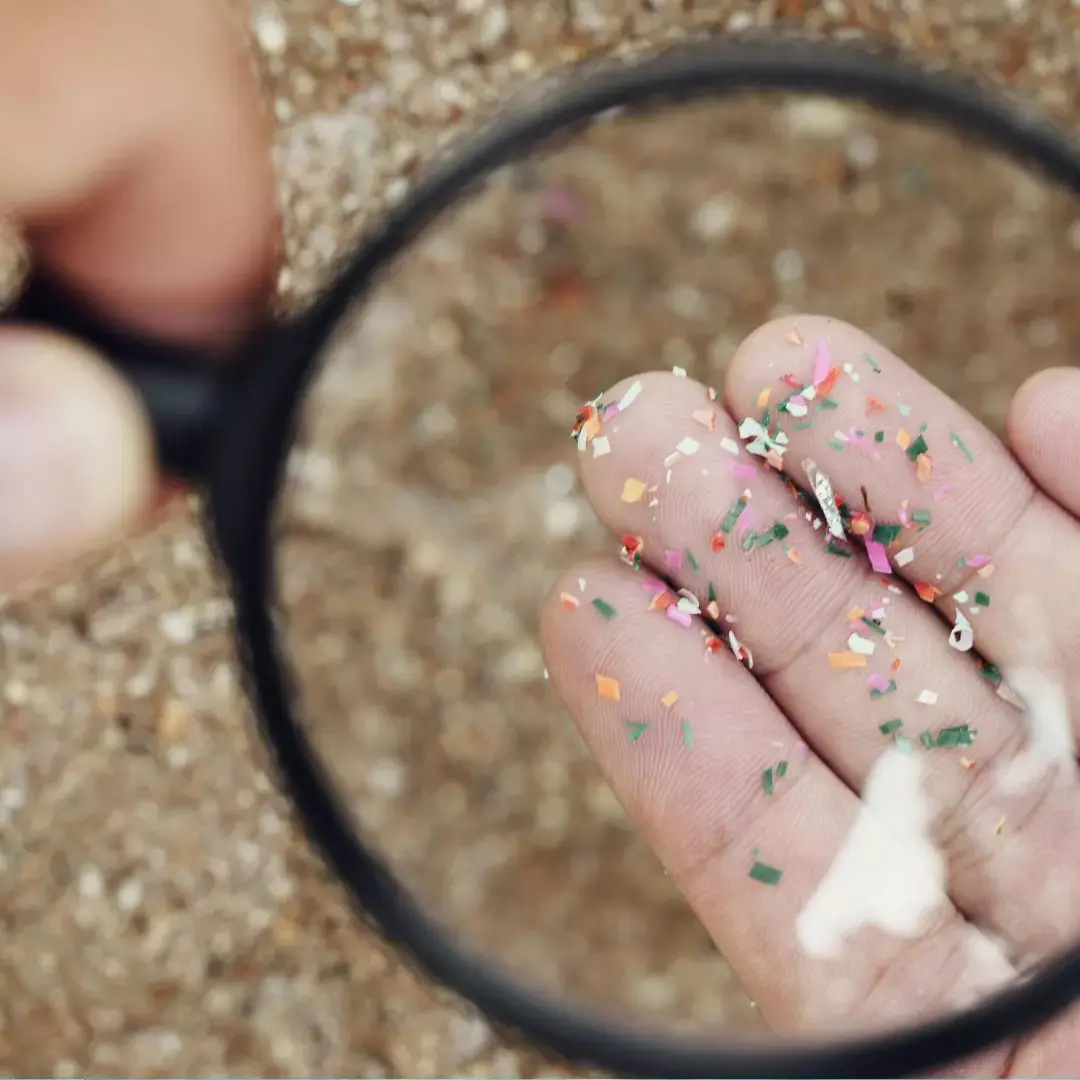Cosmetic chemists now face a clear reality: the European Union’s microplastics restriction reshapes how teams design exfoliants, encapsulates, glitters, and film-forming systems. Because regulatory expectations escalate through 2025–2027, you need a lab-ready workflow that moves beyond headlines. This guide delivers exactly that: a crisp definition, a practical decision tree, real product examples, and a sequenced plan that aligns R&D, Regulatory, Packaging, and Supply Chain.
Research (primary): ECHA — Microplastics Hot Topic & regulatory materials: https://echa.europa.eu/hot-topics/microplastics
What the restriction targets (operational definition)
In practice, the scope captures intentionally added synthetic polymer particles that remain as solid, non-biodegradable fragments at use or release. Consequently, you must evaluate beads, glitter, encapsulation shells, sensory spheres, and certain film-forming powders. Meanwhile, you can exclude systems that meet biodegradability proof or that dissolve completely under defined conditions. Nevertheless, auditors will expect evidence, not assumptions.
Likely in scope
- Legacy polyethylene microbeads in scrubs
- PET/PMMA glitter flakes for makeup & nail
- Acrylate-based encapsulates (fragrance/actives)
- Solid polymer sensory spheres and mattifiers
- Non-degradable film-forming powders
Often out of scope (with proof)
- Biodegradable microspheres (validated by OECD tests)
- Water-soluble carriers that fully dissolve in use
- Particles permanently bound in an inert cured matrix
- Natural polymers that meet exemption criteria
Tip: Keep a one-page evidence sheet per ingredient in your dossier: identity, polymer nature, particle state at use, and any biodegradation results. Therefore, you can answer questions fast during inspections.
Decision tree (use this on every raw material)
- Identify the physical state at use. Does the ingredient introduce solid polymer particles to the product during application or post-rinse?
- Check size & persistence. Do particles fall under common microplastics criteria and resist biodegradation?
- Assess binding & solubility. Does the process dissolve the polymer or permanently bind it into a cured matrix?
- Verify exemptions with data. Do you hold test reports or certificates that demonstrate biodegradability or a qualifying exemption?
- Decide & document. If evidence fails to exclude, treat as restricted and proceed to substitution or reporting.
This path sounds simple; however, execution lives in the details. Consequently, the “evidence or exclude” rule governs every judgment call you make.
Category examples (with practical switches)
1) Scrubs & exfoliants
Teams retired polyethylene beads years ago, yet some legacy SKUs still reference old bead suppliers. Replace them decisively. Moreover, validate particle roundness and abrasivity so the new feel matches the brand target.
- Switches: milled bamboo, olive kernels, cellulose spheres, calcium carbonate, silica.
- Checks: abrasion score, rinse-off clarity, drain safety, plant carryover claims.
2) Glitter & decorative flakes
Conventional PET/PMMA glitters create obvious risk. Therefore, move to certified biodegradable flakes or mineral-based sparkle. Meanwhile, confirm brightness, flake integrity, and migration on skin.
- Switches: cellulose-based glitter, mica-treated sparkle, mineral platelets.
- Checks: luster under daylight/LED, fallout in wear tests, binder compatibility.
3) Encapsulates (fragrance & actives)
Crosslinked acrylates historically dominated fragrance capsules. Replace them with lipid or polysaccharide shells and re-tune release kinetics. Consequently, you protect both compliance and sensorial impact.
- Switches: starch/cellulose shells, alginate systems, lipid-core particles.
- Checks: release in shear/humidity, storage stability, clarity in clear bases.
4) Film-formers (mascara & long-wear)
Some solid polymer powders and flake resins fall into scope. Instead, pivot toward biodegradable networks or non-persistent hybrids. In addition, rebalance wax ladders and volatile profiles to recover payoff.
- Switches: modified polysaccharides, biodegradable polyesters (where validated), hybrid resin-wax networks.
- Checks: rub-off, water resistance, curl/hold for mascaras, transfer for lips.
2025–2027: practical compliance timeline
Different product families phase in at different moments. Consequently, you should plan changeovers as a rolling program instead of a single hard stop. The outline below keeps labs and packaging in sync.
| Window | What your lab does | What Regulatory logs |
|---|---|---|
| Now → Q1 2025 | Audit every polymeric particle; run the decision tree; request supplier dossiers; flag risks. | Create ingredient one-pagers; open change controls; record evidence status. |
| Q2–Q4 2025 | Prototype substitutions; build test ladders; validate rinse-off and wear performance. | Attach test reports; update product files; align artwork headroom. |
| 2026 | Lock formulas for rinse-off families; stage compliant packaging; schedule cutovers. | Freeze dossiers for affected SKUs; publish internal go/no-go gates. |
| 2027 | Complete leave-on transitions; finalize decorative categories; monitor claims. | Close change logs; archive certificates; confirm market compliance. |
Reminder: Sequence by business risk: high-volume rinsers first, then decorative long-wear items, then low-risk stragglers. Therefore, your supply chain avoids pileups at printers.
Supplier workflow (what to request, how to verify)
- Disclose particle status. Ask vendors to state clearly whether their material introduces solid polymer particles at use.
- Provide biodegradation proof. Request test method, conditions, and percent mineralization. In addition, capture pass/fail criteria explicitly.
- Explain fate in use. Require a simple narrative: dissolve, bind, degrade, or persist. Consequently, auditors won’t need to infer.
- Commit to change notices. Build management-of-change language into POs. Therefore, you receive alerts before a tweak creates new risk.
Because gaps create delays, build a /supplier-docs folder per SKU and mirror the paperwork into your master dossier. Moreover, tag files with date and version to simplify audits.
Lab playbook (keep performance while you de-risk)
Maintain scrub feel without plastics
Balance particle size distribution and hardness. Then tune viscosity so beads stay suspended. Finally, benchmark rinse feel on wet skin; consumers notice drag more than size alone.
Hold glitter brightness
Adjust binder rheology and flake loading. Meanwhile, test under warm LEDs and daylight because sparkle can shift with spectrum.
Match capsule release
Use humidity and shear to simulate application. Next, record headspace for fragrance capsules or HPLC for actives. Consequently, you can defend equivalence in claims review.
Recover long-wear
Pair biodegradable film-formers with a wax ladder (microcrystalline/paraffin/carnauba) and a volatile carrier profile. As a result, payoff and transfer stay competitive.
Records & claims (tighten the paperwork)
- One-page ingredient proof: identity, polymer type, state at use, fate, test citations.
- Batch-level notes: formula version, packaging version, first compliant batch date.
- Claims hygiene: prefer “formulated without intentionally added microplastics” over vague “plastic-free.” Therefore, compliance and marketing stay aligned.
Keep every conclusion falsifiable. In other words, hold data that another chemist can replicate.
Portfolio risk register (make decisions visible)
| SKU | Category | Risk driver | Status | Next gate | Owner |
|---|---|---|---|---|---|
| DL-421 | Rinse-off scrub | Legacy bead supplier | Alt validated | Pilot run | Formulation |
| MX-210 | Mascara | Film-former powder | In testing | Wear panel | Claims/QA |
| FX-118 | Glitter eye | PET flakes | Design lock | Press proof | Packaging |
| FR-302 | Body lotion | Fragrance capsules | Alt shortlisted | Stability T30 | Regulatory |
Share this table weekly. Consequently, leadership sees blockers early and removes them before deadlines compress.
Quick answers for your team
Do we treat every polymer as a microplastic?
No. You only treat solid, non-biodegradable particles as restricted. Nevertheless, you must hold evidence for exclusions.
Do soluble polymers qualify as safe?
Sometimes. You still need dissolution data that reflects actual use; otherwise, auditors may challenge the claim.
Can we keep our old glitter if we coat it differently?
Unlikely. If a non-biodegradable plastic core persists, the product still carries risk. Therefore, move to certified biodegradable systems.






